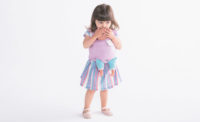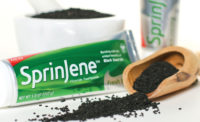Create a Great Brand Launch


Birch Benders uses every opportunity on its packaging to show personality. Copy is friendly, informative and simple on the jars’ backs.

The five-sided pouch, by Innovative Packaging Solutions Inc. (www.ipspack.com), provides plenty of room for the brand’s beautiful illustrations.

With the jars, gourmet pancakes are easily possible anywhere as long as there is water and a heating element, which fulfills the brand’s mission.




Who doesn’t love a do-over? While our society isn’t that keen on failure, we still like to encourage second chances. If at first you don’t succeed, try again, right? That positivity works well in many areas — riding a bike, learning to play an instrument, passing your driver’s test. The CPG industry isn’t always as lucky: With nearly all purchase decisions made at shelf, your brand cannot afford to not win customers over in store with its story. Neither can it profit if your item disappoints buyers with the package’s features once they begin at-home use.
All companies’ goods fall under customer scrutiny, but new brands have it especially tough — people have next to nothing invested in them and are less willing to try a “failed” product again. With today’s consumers, you may never get the chance to proclaim the third time as the charm.
GAIN GROUND
BRANDPACKAGING turned to Birch Benders, makers of the first natural and organic just-add-water pancake and waffle mix, to see how it created a successful brand identity and packaging as well as product launch. Matt LaCasse, CEO, and Lizzi Ackerman, COO — affectionately known as “The Pancake Man” and “Dr. Pancake” at the micro-pancakery — fill us in with several truths on how the brand met customers’ high expectations from the very beginning.
1. Do what you know and love: The passion will be evident in your branding and packaging.
Birch Benders’ founders (LaCasse and Naomi Honig) went into the pancake business for a reason: It’s fun. The duo likened their idea of excellent but convenient pancakes to birch bending, a wholesome and merry pastime of climbing the flexible trees until they tip the climber back down to the ground. Birch Benders was created, and the brand set out with a purpose: bringing happiness and simplicity to the kitchen through pancakes.
“The Birch Benders reason for being is really encapsulated in our mission statement: ‘We believe that some of the best moments in life are spent around the table with the ones you love. In these crazy, dizzy, over-scheduled days, we want to bring people back together. Our goal at Birch Benders is to make the world a more beautiful and delicious place, one pancake at a time,’” says LaCasse. “We all have those twinges of nostalgia thinking back to our favorite and most idyllic childhood memories. We want the taste of our pancakes and the imagery of our branding to be woven into those memories and emotions for our young consumers. And we hope that their parents are aspiring to make those experiences for their kids when making Birch Benders with them.”
2. Believe in your idea 1,000 percent and be able to defend it with passion and conviction against all odds.
“It’s so hard starting a company, and you will get challenged and questioned a lot at first, even if it’s a great idea,” says Ackerman. “It takes time to get right, so if you don’t believe from the bottom of your heart in what you’re doing, you might want to consider doing something else.”
“We truly value the time we spend with our friends and family, sitting around the table over good food with good company. And we’re proud to be offering a product that requires minimal prep and cleanup, one that will save you kitchen labor so you can spend those precious moments doing what you want — whether catching up with your kids before school or your partner before work, whether making first chair skiing or hanging out around the campfire. Life is too short to spend doing dishes!”
3. Take the time to understand your brand.
Birch Benders’ mixes are sold across the United States in retail stores, online through the Birch Benders website (BuyPancakes.com) and Abe’s Market, and have a presence in fine hotels. But before the brand even thought about where the products would be available, they looked at who would want them and why their brand would be different than any other.
“Our products have fairly wide appeal,” says Ackerman. “But our biggest target, by far, is moms/families with young children. Moms love the convenience of our products and the fact that they’re healthy but so delicious that their kids don’t think twice about it. And kids go wild for our pancakes at demos!”
And they should — Birch Benders put a huge amount of effort and time into producing some of the best-tasting pancake and waffle mixes around. Taste and quality are the brand’s top priorities for its fans. Recipes and worthy ingredients found by double-blind taste tests and seven flavors (including gluten-free mixes) mean customers have very few reasons to refuse. Still, the crew doesn’t mind if a consumer doesn’t fully agree.
“Your brand can’t be everything to everyone,” says LaCasse. “You will have to choose to whom you’re trying to appeal — and in that process, you will figure out who finds you unappealing. Your brand will be unappealing to some people, but you can’t sweat it! Without that sort of focus, it’s very easy for your brand to get lost amongst the competition. There are a lot of great products and brands out there. But in the pancake category, there are none, to our knowledge, that are offering both just-add-water convenience and certified organic recipes (we’re certified Made With Organic by CCOF) — so we’re proud to be the first.”
“Our branding and packaging also distinguishes us from our competitors,” adds Ackerman. “We’re the only gourmet pancake company with a just-add-water-to-jar option, and we’re the only one using a five-sided, flat-bottom, resealable pouch.”
Many times, brands find competitors trying to move into their territory by copying graphics or structures. There’s a reason branding professionals preach forming emotional connections with consumers: It’s one of few things that can’t be faked. The feeling Birch Benders has poured into its product can’t be counterfeited.
“Our hand-drawn illustrations also make us stand out in a category not known for artistry or innovative branding,” says Ackerman. “Our desire was to make products that are genuine pieces of art. We figured, if our products are going to be on a retailer’s shelf and in someone’s kitchen, we want to make that aisle and that kitchen a more beautiful and delicious place. We wanted our branding to not only tell a story but also bring out the consumer’s story. To make people feel! That’s why we created scenes for each flavor that aren’t rooted in a specific time or place, but rather scenes that just pull you in viscerally, however young or old you are, and maybe you don’t even know why. Each of our seven flavors has its own unique scene and characters within the world of Birch Benders. These are scenes that we wanted to be approachable, captivating, beautiful and, ultimately, timeless — scenes that appeal to kids and adults alike, scenes that stir the soul.
“The illustrations also speak to the attention to detail and artistry we’re trying to bring to our products. You can immediately tell upon seeing our pancakes that these are quality products — yet they don’t look ostentatious or elitist whatsoever. We wanted our mixes to feel as comfortable in the Ritz-Carlton (one of our accounts) as in a campsite.”
4. Don’t put your face out there until you’re ready.
“We spent two years testing our brand in just a few Whole Foods stores and went through three rounds of rebranding in-house before hiring professionals and putting ourselves out there at Expo West this year,” Ackerman notes. “And we’re really glad we waited that long. Since launching our new branding and packaging at Expo West, we’ve been taken on by three national distributors and many new accounts across the country. There’s no need to rush it! You only have one chance — better to take your time and put your best foot forward.”
5. Work with the pros when it comes to packaging.
“While you may have the vision, they will have the resources and experience to make it come to life,” says LaCasse. “Shop around the different firms and do your homework on the different options. There are plenty of companies that will gladly take your money and give you little in return. If you form great relationships with great companies, you can make it work.
“We wanted to completely re-imagine the pancake experience and make it as wonderful as possible. We wanted to facilitate more meals with friends and family and do our part to make them as magical as possible. And we knew that to do all this, we’d need not only the best recipes but also the most beautiful, imaginative packaging — packaging that would stand out to consumers when they least expected it! The greater the impact of our packaging, the better. That meant starting from ground zero and rethinking what was possible.
“The jars are our flagship product and an example of form following function,” he continues. “The great benefit of the jars is that they’re self-contained, so you don’t even need a bowl to prepare pancakes. They’re beautifully convenient. We’ve found that moms immediately pick up on the preparation of the jars — just add water to the jar’s fill line, so no utensils, eggs or milk are needed. Preparation is so easy that kids can make breakfast themselves!
“Our pouches, on the other hand, are a great example of form meeting function. The ‘box’ pouch design allows for maximum brand impact — and with five printable sides, it’s efficient. It also has a resealable closure to extend shelf life. The pouches are our response to consumer demand for more competitive pricing and for the ability to go through the mix more slowly (rather than use all at once, which is what most people do with the jars). Pouches are a lot less expensive to produce than jars too, so we knew it was a necessary progression for us.”
“But in looking at other pouches in our category, we weren’t inspired,” Ackerman adds. “The pancake category is largely dominated by bag-in-box packaging and standard bottom-gusset stand-up pouches. So we looked outside our category. We looked at what other companies in different markets were doing, and the flat-bottom, five-sided, resealable pouch stuck out to us. It has a great shape that provides a fantastic billboard for branding yet still can be done affordably, which was a necessity if we wanted to lower our pricing.”
As the Pancake Crew will tell you and many of us have experienced, there never seem to be enough funds or enough space for branding on the package. Giving up on good branding and packaging because of that challenge isn’t an option, however.
“You have to very clearly define your priorities and make sure that your company’s personality and selling points are succinctly articulated on the packaging,” says LaCasse. “Easier said than done! When we decided it was time to get professional branding, we knew choosing a firm wouldn’t be easy. Out of thousands, how do you find the one that will best articulate your philosophy, your personality and your points of differentiation? And once you found that firm, how do you then find the right label and/or flexible packaging company to provide the highest quality printing and, in the case of our pouches, help us bring our five-sided pouch idea to life? That was no easy task, and we took our time to tackle those hurdles. We were patient about all this. We started early. We talked to all the major players. And we ended up with results we’re thrilled with and strong relationships with companies that we expect to work for many years to come.”
6. Find a mentor!
“We would not be here right now were it not for the invaluable wisdom of our amazing mentors and advisors,” says Ackerman. “Find a few companies that are years ahead of you, companies you admire whose success you aspire to reach, then reach out to them. As long as they aren’t in your exact category (in our case, aren’t making pancakes/waffles/breakfast food), you’ve got a great shot! People are a lot nicer and more open than you might think — even extremely successful people. And unless you have an industry veteran on your team, you will eventually need the advice and counsel of people who have succeeded in your industry — whether that be food, beverages, cosmetics, pharmaceutics, packaging, etc. — if you want to make it! There are tons of tough decisions to make, and they only get harder, so it helps to find an ally or, ideally, multiple allies, to offer their wisdom and guidance when you face those tricky decisions.”
EYE ON THE PRIZE
There will never be perfect circumstances and conditions for bringing any product to market, but brands can control the passion and care that go into getting it there. In closing, LaCasse reminds our industry to remember why we do what we do — and how that will benefit your brand.
“Make sure you step back every once in a while and take a look at the forest versus just the trees. There are so many tasks and demands to get caught up with on a daily basis, and it’s easy to forget why you started your brand in the first place. It’s the initial reason why you started your brand that should define many of your priorities and that you should show to the world. Yes, the bottom line is very important, but try to avoid being reactionary. You have a vision and a raison d’être — stick to your guns, and people will come to appreciate you and your brand for it.”
Looking for a reprint of this article?
From high-res PDFs to custom plaques, order your copy today!











